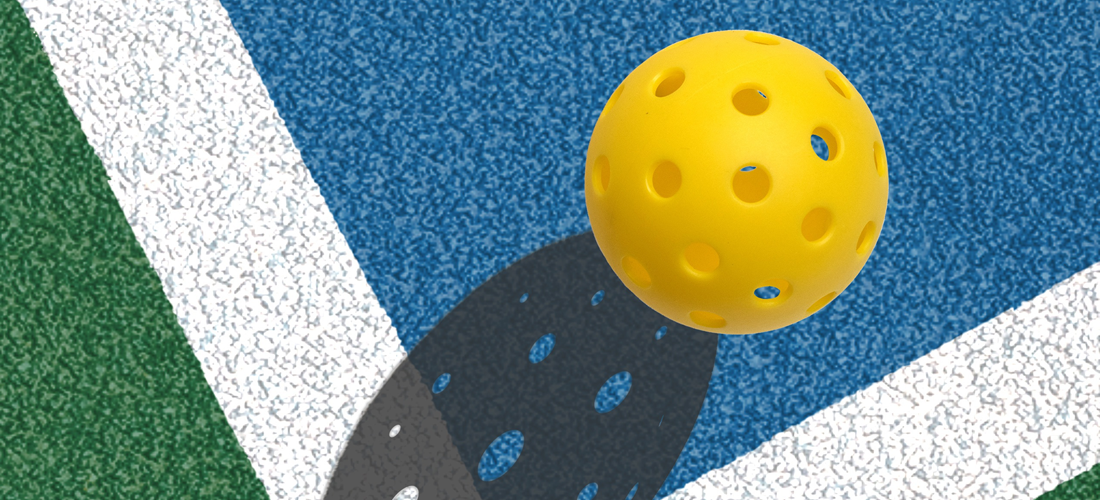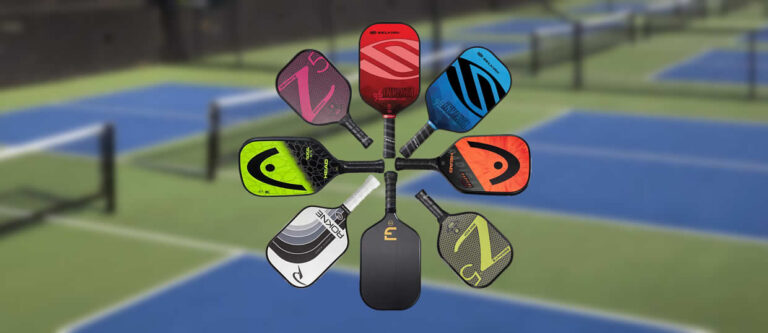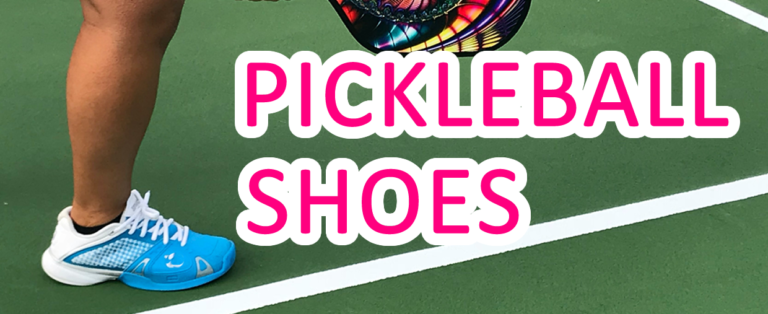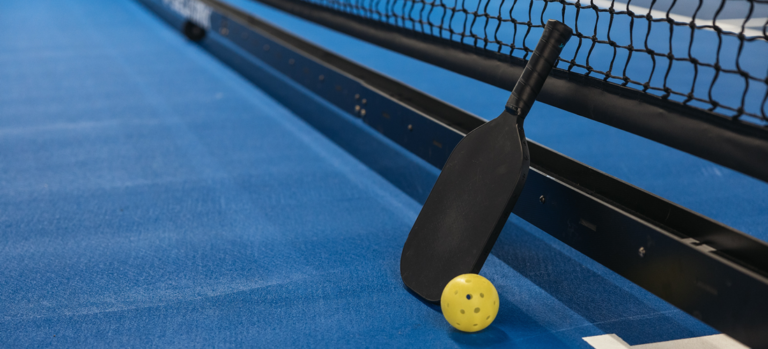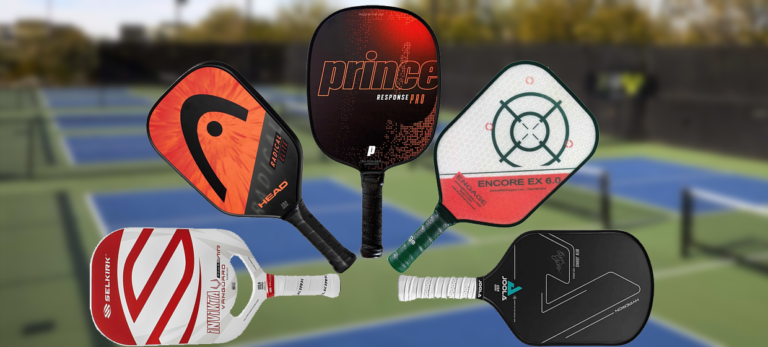Pickleball Balls: Choosing the Perfect One for Your Game
Are you looking for the perfect pickleball ball? Look no further! This blog post will provide a comprehensive guide to all things related to pickleball balls. We’ll discuss different types of materials, sizes, and more so that you can make an informed decision when choosing your next pickleball ball. Get ready to learn everything there is to know about these unique little spheres!
The Basics of Pickleball Balls
Pickleball balls are an essential component of the popular racquet sport of pickleball. These small, perforated balls play a crucial role in determining the pace, bounce, and overall performance of the game. Whether you’re a seasoned player or just starting to explore the sport, understanding the basics is fundamental to improving your gameplay and overall experience.
Composition and Materials
Pickleball balls are typically made from durable and lightweight materials to ensure proper flight and bounce during play. The most common material used is a type of polymer called high-quality, seamless plastic. This material provides consistent performance and durability. The seamless design prevents irregularities on the surface, contributing to smoother and more predictable ball flight.
Indoor vs. Outdoor Pickleball Balls
There are distinct differences between indoor and outdoor balls to accommodate the playing conditions of each environment. Indoor balls are designed to have a softer feel and are optimized for use on smooth, indoor gym floors. They have a slightly lower bounce, allowing for better control and slower gameplay. Outdoor balls, on the other hand, are constructed to withstand the harsher surfaces of outdoor courts like concrete or asphalt. They have a harder surface and are more durable to handle rougher play and outdoor elements. Using the appropriate ball for the corresponding court type is crucial for maintaining fair gameplay and maximizing performance.
Ball Colors and Visibility
Pickleball balls come in various colors, with the most common ones being white, yellow, and neon green. The choice of ball color often depends on the lighting conditions of the court and personal preferences. Yellow balls are favored for indoor play as they are more visible against the typically darker indoor court surfaces. White balls are popular for outdoor play due to their contrast against the sky and surroundings, making them easier to spot. Neon green balls are designed for enhanced visibility in both indoor and outdoor settings.
Regulation Size and Weight
Official pickleball balls must meet specific size and weight standards set by the USA Pickleball (USAPA) and the International Federation of Pickleball (IFP). The standard size of a pickleball ball is 2.87 inches (approximately 7.3 cm) in diameter, and its weight must range between 0.78 to 0.935 ounces (22 to 26.5 grams).
Importance in Gameplay
Pickleball balls significantly influence the pace, spin, and trajectory of shots during a game.
The ball’s responsiveness to paddle contact affects how players control their shots and engage in rallies. The bounce height and predictability of the ball’s path are vital for proper positioning and strategic play. Understanding the basics allows players to make informed decisions when choosing the right balls for their playing environment and skill level. Whether you’re playing indoors or outdoors, selecting the appropriate ball can enhance your overall experience and enjoyment of this exciting and fast-paced sport.
Characteristics of High-Quality Pickleball Balls
High-quality pickleball balls possess several key characteristics that contribute to their performance, durability, and overall suitability for the sport. These characteristics ensure a consistent and enjoyable playing experience for both casual and competitive players. Here are the main characteristics of high-quality pickleball balls:
Durability
High-quality pickleball balls are made from durable materials that can withstand the rigors of regular play. They are less likely to crack or break, even after repeated use on various surfaces.
Consistent Bounce
These balls offer a reliable and consistent bounce, which is crucial for fair and predictable gameplay. A consistent bounce allows players to anticipate shots and respond effectively during rallies.
Smooth Surface
High-quality balls have a smooth surface with minimal imperfections. A seamless design ensures uniformity and reduces any erratic bounces that may arise from rough spots or seams.
Balanced Weight
The weight of the ball is carefully regulated to fall within a specific range. High-quality pickleball balls have a balanced weight distribution, which contributes to stable flight patterns and enhances shot accuracy.
Appropriate Hardness
The hardness of the ball influences its responsiveness upon impact. High-quality balls strike the right balance between being too hard (which may cause discomfort to players) and too soft (which can affect the ball’s performance and longevity).
Noise Level
Pickleball is known for its social and community-friendly nature, and high-quality balls produce a moderate level of noise upon impact. They are not excessively loud, making them suitable for both indoor and outdoor play without causing disturbances.
Visibility
The color of the ball plays a significant role in its visibility on the court. High-quality pickleball balls come in bright and contrasting colors that make them easy to spot against various court surfaces and under different lighting conditions.
Approved for Tournament Play
Top-quality pickleball balls are often approved by official governing bodies, such as USA Pickleball (USAPA) or the International Federation of Pickleball (IFP), for use in sanctioned tournaments. This approval ensures that the balls meet the required standards of size, weight, and performance.
Suitability for Indoor and Outdoor Play
Depending on the type of court surface (indoor or outdoor), high-quality pickleball balls are specifically designed to perform optimally in their respective environments. They offer a consistent playing experience regardless of the playing surface.
Player Feedback
High-quality balls often receive positive feedback from players of different skill levels. They are well-regarded for their playability, longevity, and overall satisfaction.
Players looking to invest in high-quality pickleball balls should consider these characteristics to ensure they have the best possible experience on the court. While various brands and models are available, seeking recommendations from experienced players and coaches can also help in selecting the ideal pickleball ball for individual preferences and needs.
Proper Care and Maintenance of Pickleball Balls
Proper care and maintenance of pickleball balls are essential to ensure their longevity and optimal performance on the court. Regular maintenance practices can help preserve the integrity of the balls, providing a consistent bounce and flight during gameplay. Here are some useful tips for caring for and maintaining your pickleball balls:
Clean the Balls Regularly
After each play session, wipe the pickleball balls clean with a damp cloth to remove dirt, dust, and debris that may accumulate on the surface during play.
Avoid using harsh chemicals or abrasive cleaners, as they may damage the ball’s smooth surface.
Use a Ball Machine for Cleaning
Some players prefer using a ball machine to clean their pickleball balls. The machine’s oscillating motion can help remove dirt and grime effectively.
If you don’t have a ball machine, you can create a DIY cleaning device using a small container with a lid and some water. Simply place the balls inside the container, add water, close the lid, and gently shake to clean the balls.
Inspect for Damage
Regularly inspect your pickleball balls for any signs of damage, such as cracks, dents, or deformities. Damaged balls may not perform optimally and could pose safety risks during play.
If you notice any damage, it’s best to retire the affected balls and replace them with new ones.
Store the Balls Properly
Store pickleball balls in a cool, dry place away from direct sunlight and extreme temperatures. Exposure to excessive heat or cold can impact the ball’s material and affect its performance.
Use a ball holder or container specifically designed for pickleball balls to prevent them from getting crushed or damaged during storage.
Rotate the Balls
To ensure even wear and maintain consistency among the balls you use, rotate them regularly during play. By rotating the balls, you can distribute the impact evenly, prolonging their lifespan.
Limit Excessive Bouncing
Avoid excessive bouncing or slamming the balls on hard surfaces, as this can lead to premature wear and affect the ball’s bounce and flight characteristics.
Replace Old Balls
Over time, pickleball balls will naturally wear out due to repeated use and impacts. When you notice a significant decrease in bounce or other performance issues, it’s time to replace the old balls with new ones.
Avoid Wet or Damp Conditions
Keep pickleball balls dry and avoid playing in wet or damp conditions. Moisture can damage the balls’ material and negatively impact their performance.
By following these care and maintenance practices, you can extend the lifespan of your pickleball balls and ensure that they provide consistent performance on the court. Well-maintained balls not only enhance your gameplay experience but also contribute to a more enjoyable and competitive pickleball session with friends and fellow players.
Common Myths and Misconceptions About Pickleball Balls
Pickleball, like any other sport, has its fair share of myths and misconceptions surrounding the equipment used, including pickleball balls. Let’s debunk some of the common myths and misconceptions:
Myth: Heavy balls are always better for gameplay.
Reality: The weight of a pickleball ball is standardized, and all official balls fall within a specific weight range. Heavier balls may seem more powerful, but in reality, the standardized weight ensures fair and consistent gameplay for all players.
Myth: Bright-colored balls are harder to see on the court.
Reality: The color of a pickleball ball doesn’t significantly affect its visibility on the court. Different players may have personal preferences for ball color, but bright-colored balls, such as yellow and neon green, are designed to enhance visibility in various lighting conditions.
Myth: Pickleball balls don’t significantly impact the game.
Reality: Pickleball balls play a crucial role in the game. Factors such as the ball’s bounce, flight, and responsiveness upon impact can directly affect gameplay, shot selection, and overall strategy during a match.
Myth: Using indoor balls outdoors and vice versa has no impact.
Reality: Indoor and outdoor pickleball balls are designed with different materials and characteristics to suit their respective playing environments. Using the wrong ball type on a particular court surface can affect the ball’s performance and durability.
Myth: All pickleball balls are the same; brand doesn’t matter.
Reality: While all official pickleball balls meet certain standards, different brands may offer variations in performance, durability, and feel. Choosing a reputable brand known for producing high-quality balls can enhance your playing experience.
Myth: New balls always perform better than slightly used ones.
Reality: New pickleball balls might have a glossy finish that can cause them to be a bit more slippery initially. Slightly used balls can offer better grip and control, making them preferred by some players.
Myth: Warmed-up or used balls are less bouncy and should be replaced.
Reality: Pickleball balls can lose some bounce over time, especially with frequent use. However, gently used balls that have lost a bit of bounce can still be suitable for recreational play and practice sessions.
Myth: All pickleball balls sound the same on impact.
Reality: The noise level of pickleball balls can vary based on their composition and design. Some balls may produce a louder or quieter sound upon impact, which can influence the overall atmosphere during play.
It’s essential for players to stay informed and separate fact from fiction when it comes to pickleball balls. Understanding the characteristics and differences between various types of balls can help players make informed choices that suit their playing style, court surface, and overall preferences.
Conclusion
Pickleball is an increasingly popular sport and the right pickleball ball can make a big difference in your game. From recreational to tournament-grade, there’s no shortage of options out there for players looking for the perfect fit. Consider all factors when choosing a pickleball ball including weight, material, bounce rate and color before making your purchase decision. With so many different balls available on the market today, you should be able to find one that meets your needs perfectly – whether it’s for casual or competitive play! Have fun playing this fast-paced sport with friends and family while using only the best gear possible.
